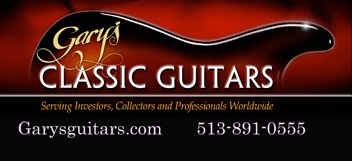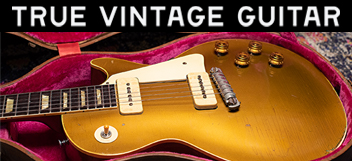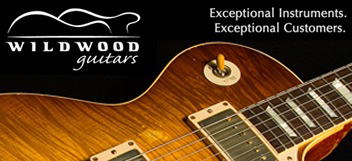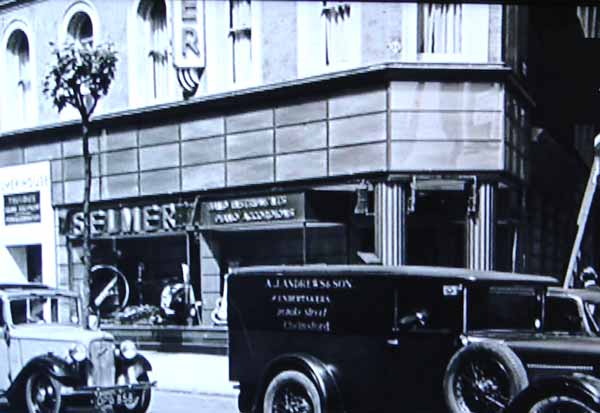Xpensive Wino
Well-known member
- Joined
- Nov 3, 2012
- Messages
- 6,079

Two brothers, Ben and Lew Davis, started Selmer London back in 1929 when they secured an agency deal to sell saxophones supplied by the French company Selmer. They distributed and made lots of other instruments, too, adding German-made Hofner guitars in the ‘50s, followed by Gibson in 1960.
<o
The Davis brothers had two stores in the centre of town. In 1937 they moved from Moor Street to a new HQ,opening Selmer at 114-116 Charing Cross Road, on the corner of Flitcroft Street. The shop there sold secondhand as well as new guitars, brass, woodwind,keyboards, and amps.
<o
Later, they added the smaller Lew Davis shop at number 134, a short walk north on the same side of the road, almost at the corner of Denmark Place. Until Lew’s place closed around 1967, the two shops were more or less
interchangeable, and for many players "Selmer’s" meant either one.
<o
Denmark Street, which ran off to the east on the stretch of Charing Cross Road between the two shops, was London’s own Tin Pan Alley, with management offices, demo studios, cafes, and other music-biz spots. Charing Cross Road itself was the unofficial eastern boundary of Soho, roughly a square mile bounded by Oxford Street to the north, Leicester Square and Piccadilly Circus to the south, and Regent Street to the west.
<o
Since at least the ‘30s, music clubs had settled well alongside Soho’s seedier businesses, making for a lively musical scene, and the Selmer shop found itself in a perfect location. There were other music shops in the area, of course, but Selmer quite simply became a mecca for guitarists, not least because of its Gibson connection.
<o
Jimmy Page bought a Danelectro and his first Les Paul from Selmer’s. Jimmy was friends with Albert Lee, and they’d often bump into each other in and around Charing Cross Road. One day in 1961, someone heard Albert playing there and asked if he’d join his band. Part of the deal was taking over payments on a Les Paul Custom.
<o
"At the time, it was a guitar I didn’t think was in my budget,"Albert told me. "I was looking for something around £120 or so, and this Custom was well over £200. But I just loved it." He played the Custom for around five years, at first with Bob Xavier and then in Chris Farlowe’s Thunderbirds.
<o
Jimmy Page was playing with Neil Christian’s Crusaders at the time.
<o
"He really liked the sound of my Les Paul Custom and my Supro amp," Albert said, "to the extent that he went out and bought the same setup. This would have been 1962, maybe ’63. He went to Selmer’s, and they still had a couple of these Les Pauls. Not on the wall, but they had a couple in their warehouse. They weren’t that popular at the time. He bought that and a smaller Supro amp like mine."
<o
Eric Clapton was a regular in the West End music shops,especially Selmer’s. In 1965, he bought the famous Beano Les Paul Burst there.When he visited the shop, Eric had in mind the Les Paul that his hero Freddie King played. In fact, Freddie played a Goldtop, but the picture on Eric’s King album made it look more like a Burst. And that’s what Eric walked out of Selmer’s with on that summer’s day in ’65.
<o
Jeff Beck bought his first Les Paul early in 1966, having made a mental note when he saw Eric playing the Beano guitar with Mayall.
<o
"I already knew Les Pauls sounded good," Jeff told me,"because Jimmy Page had a Custom. They had this deep sound, and I really needed that power in a three-piece, to help fill out the sound. So I went sorting around. There was a guy at Selmer’s in Charing Cross Road — I think it might have been Mickey Keen — he worked there but he said he’d got a good one at home. It was him or one of the others who worked there — that was the shop to go to. So this guy said, ‘Yeah, meet me at so-and-so and I’ll bring along the guitar.’"
<o
Jeff remembered this first Les Paul of his, to which someone had added a black pickguard, was a ’59 and cost him about £175.
<o
Steve Howe also was a regular visitor to Selmer’s in the ‘60s.
<o
"I’d left school when I was 15 and had nothing to do,"Steve told me. "So I’d get on the bus to the Charing Cross Road, walk into a guitar shop, and go, ‘Can I play that guitar?’ They didn’t ask if you were going to buy it, they’d say, ‘Sure, go ahead and play it.’ Things were laid-back then. And although the other shops were worth a visit, the Selmer shop was Gibson-land. So I’d be sitting in Selmer’s playing away, and guys like Doug Ellis would say hello, and they’d ask what you were up to—you’d meet all kinds of people. Albert Lee used to come in, and I’d rub shoulders with him; he called me Face. I bought my very first Gibson guitar at Selmer’s, my prized ES-175D, in 1964."
<o
Jerry Donahue, one of the sales clerks who worked at Selmer during the day and gigged at night, sold Eric Clapton an ES-335 in 1968. A week or two later Jerry was at the Albert Hall to see Eric play the 335 at one of Cream’s farewell concerts.
<o
Jim Marshall used to buy Premier kits at Selmer’s to sell to his drumming students, long before he considered much louder things. Pete Townshend of The Detours bought a Fender Pro amp there. And Mick Taylor was another guitarist who found his first Les Paul at Selmer’s.
<o
But all good things come to an end. A hi-fi firm, REW, took over the store in the ‘70s—then, a little later, it became the Turnkey shop, which sold recording equipment, maintaining the building’s musical connections until about 2008.
<o
Today, the area all around is being flattened by developers who seem keen to obliterate any hint of historic character, but for now the ex-Selmer building survives. And if you choose to step through the still imposing entrance pillars at 114-116 Charing Cross Road, you’ll find yourself in the Chipotle Mexican Grill. Probably best not to ask for a guitar.<o
https://reverb.com/news/selmer-the-...apton-page-beck-and-more-bought-their-guitars





